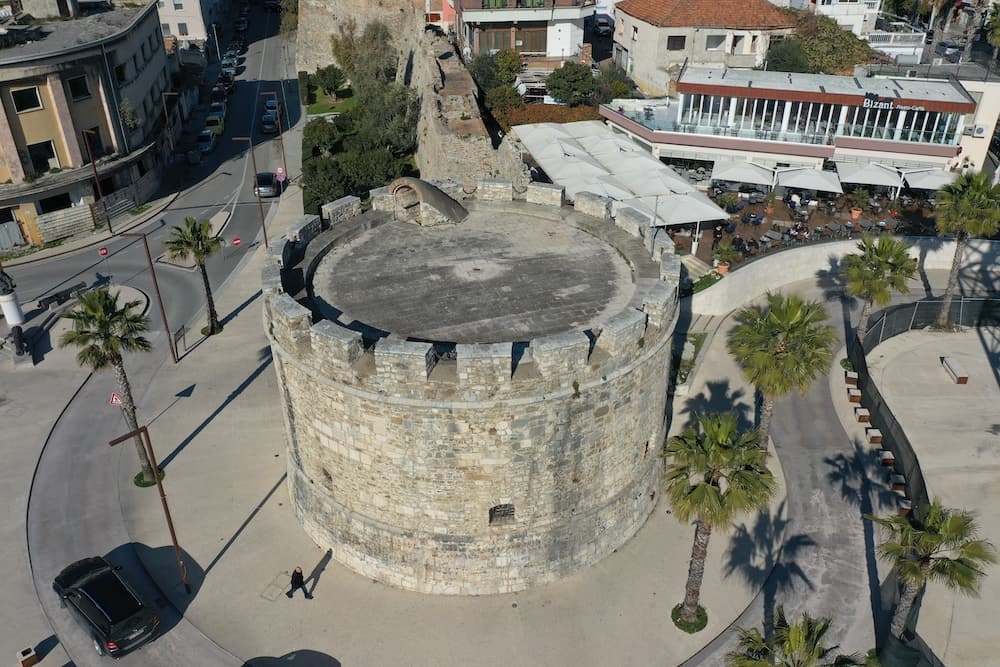
Key Takeaways
- The Venetian Tower of Durrës is a vital historical monument representing Albanian medieval heritage.
- Built during Venetian rule in the 14th and 15th centuries, it served strategic defensive and trade purposes.
- Its unique circular architecture highlights the ingenuity of Venetian military design combined with local building techniques.
- The tower remains a powerful symbol of resilience and cultural pride for Albanians today.
- Ongoing restoration efforts aim to preserve its structural integrity and historical authenticity for future generations.
Table of contents
- Historical Background: Venetian Influence During the Medieval Period
- Architectural Features: Unique Architectural Style and Restoration Efforts
- Cultural and Historical Significance: Local Pride and Historical Symbolism
- Visiting the Venetian Tower of Durrës Today: A Key Tourist Attraction in Durrës
- Preservation and Future Outlook: Protecting a Cultural Asset for Future Generations
- Conclusion: A Must-See Historical Site for Visitor Experience in Albanian History
Historical Background: Venetian Influence During the Medieval Period
The Venetian Tower of Durrës traces its origins back to the 14th and 15th centuries, a time when the Venetian Republic exerted extensive influence along the Albanian coast. Known for its formidable naval power and economic reach, Venice expanded its territories to include key sites like Durrës—a crucial port on the Adriatic Sea. This historical context provides the foundation for understanding the tower’s purpose and significance.
As Venice sought to reinforce its control over maritime trade routes, Durrës became a strategic point. The tower was constructed primarily as a defensive stronghold to protect against Ottoman invasions and other threats. The complex geopolitics of the Balkans at the time saw various powers vying for dominance, making such fortifications essential for regional stability.
Moreover, the tower played a critical role in overseeing and controlling maritime commerce. Durrës was a hub for trade and interaction between Venice and the Balkan hinterlands. The Venetian authorities used the tower to monitor ships, safeguard their commercial interests, and project power through its visible presence.
Its construction was also a clear symbol of Venetian authority. It represented their commitment to maintaining dominance in the region, especially as Ottoman forces advanced into Southeast Europe. The tower’s strategic and symbolic importance highlights its role in shaping regional history.
For a deeper dive into the medieval Balkan era, see Hodgkinson’s Scanderbeg: From Ottoman Captive to Albanian Hero, Fine’s The Late Medieval Balkans, and the article “Venice and the Sea” from The Metropolitan Museum of Art Bulletin.
Architectural Features: Unique Architectural Style and Restoration Efforts
The Venetian Tower of Durrës is celebrated both for its historical significance and its impressive architecture. Constructed from solid stone materials, it exemplifies the robust military engineering of the Venetian era. Its circular shape was a strategic choice, facilitating defensive coverage and reducing vulnerabilities to siege weaponry.
The tower’s design includes key elements such as narrow slits and windows, which served dual purposes: allowing defenders to keep watch for approaching threats and providing vantage points for defensive fire. These features also helped in natural lighting and ventilation, vital for long-term garrisoning.
Its integration with the city walls created a formidable defensive network, defending Durrës from invasions. The architecture echoes similar fortifications along the Adriatic coast, blending Venetian military style with local building practices adapted to Albanian terrain.
Since its construction, various restoration projects have aimed to preserve its structure. These initiatives focus on maintaining original architectural elements while ensuring the tower’s stability amid natural wear, weathering, and human activity. Restoration efforts also emphasize respecting the authentic Venetian architectural features, ensuring the tower retains its historical character for future generations.
Cultural and Historical Significance: Local Pride and Historical Symbolism
The Venetian Tower of Durrës holds profound cultural and historical value for Albania. It symbolizes the resilience and enduring spirit of the Albanian people, standing as a reminder of their historical struggles and achievements.
For locals, it is a symbol of pride, representing a time when Durrës was a crossroads of commerce, culture, and military strategy during Venetian rule. It also emphasizes the region’s historical ties to Venice, highlighting a shared legacy of maritime activity and cultural exchange.
Today, the tower functions as a key tourist attraction, inspiring interest in Albania’s past and fostering cultural identity. Stories of battles, sieges, and heroic figures surround it, adding layers of legend and mystique. Its presence continually educates visitors about the historical significance of Durrës as a resilient and dynamic city.
In celebrating its significance, the tower remains a symbol of heritage, pride, and cultural continuity. Preserving it ensures that future generations can connect with their history and appreciate the diverse influences that have shaped Albania.
Visiting the Venetian Tower of Durrës Today: A Key Tourist Attraction in Durrës
Visiting the Venetian Tower of Durrës offers a compelling journey into the past, giving tourists a chance to experience Albania’s rich history firsthand. Located centrally in Durrës, it is easy to access and a significant highlight in any cultural itinerary.
Location and Accessibility
The tower’s prime position in the heart of Durrës makes it reachable via bus, taxi, or on foot. Its central location allows visitors to easily include it in a day’s exploration of the city’s historic sites.
Opening Hours and Admission
Details on opening hours or entry fees are often updated, so it’s best to check local tourism information or visit the municipal tourism offices for current details. It is generally open to visitors, with guided tours available in some cases.
Nearby Attractions
The tower is close to other historic sites like the Durrës Amphitheatre and the Durrës Archaeological Museum. Combining visits to these sites enriches the understanding of Durrës’ ancient and medieval history.
Cultural Exploration
Beyond the historical sites, travelers can enjoy Durrës’ lively markets, coastal promenade, and authentic Albanian cuisine—offering a full cultural experience that complements the historical visit.
Preservation and Future Outlook: Protecting a Cultural Asset for Future Generations
Preserving the Venetian Tower of Durrës is essential for maintaining its role as a cultural and historical icon. Ongoing conservation projects aim to protect it from environmental threats such as coastal erosion, pollution, and climate change effects, alongside human activities.
Current restoration efforts involve collaboration between local authorities, preservation experts, and international organizations like UNESCO. These initiatives focus on reinforcing structural integrity, restoring damaged sections, and conserving original architectural features.
Challenges include limited funding and environmental pressures, which require innovative and sustainable solutions. Raising awareness and promoting responsible tourism are vital for ensuring long-term preservation. Protecting the tower guarantees that it remains a living monument dedicated to Albania’s history.
Conclusion: A Must-See Historical Site for Visitor Experience in Albanian History
The Venetian Tower of Durrës embodies Albania’s historical resilience, architectural ingenuity, and cultural richness. It is a captivating reminder of the region’s medieval past, Venetian influence, and local pride. Whether immersed in its storied walls or enjoying the vibrant surroundings of Durrës, visitors gain an authentic connection to Albanian heritage.
For anyone interested in history, architecture, or cultural tourism, the tower is an unmissable destination. Its preservation and ongoing restoration efforts underscore the importance placed on safeguarding Albania’s living history for generations to come.


0 Comment